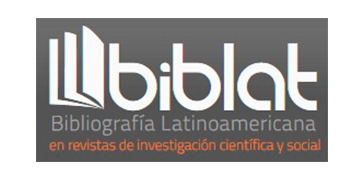Narratives of the ominous: Adolescence and school in a dialogue toward a culture of prevention against child sexual abuse
DOI:
https://doi.org/10.32870/dse.v0i33.1696Abstract
Freud (1992) describes the ominous as an ambivalent semantic nucleus between word and concept through its signifier. The ominous, unheimlich in German, refers to the sinister or terrifying, and heimlich refers to the familiar or intimate. When these two seemingly contradictory terms are brought into dialogue we find convergences, at least in the semantic field and in educational research. Child Sexual Abuse (ASI by its acronym in Spanish) is an ominous issue that plagues Latin America, and specifically Mexico’s children. Schools and their stakeholders have a decisive responsibility in addressing this topic sensitively and necessarily. This article aims to problematize current and empirical data issued by different national and international bodies, to trace some perspectives and stories produced in a dialogue with adolescents in public schools; and, finally, to interpret the meanings and narratives that shed light on a culture of prevention against Child Sexual Abuse through an exploratory proposal for a listening and narrative laboratory in schools.
Downloads
References
Alexiévich, A. (2015). Voces de Chernóbil. Crónica del futuro. España: Debate.
Arendt, H. (2016). Entre el pasado y el futuro. España: Península.
Barrágan, A. (2021). El 90% de las violaciones contra niñas en México sucede en el entorno familiar. El País. https://elpais.com/mexico/2021-11-03/el-90-de-las-violaciones-contra-ninas-en-mexico-sucede-en-el-entorno-familiar.html
Bruner, J. (2003). La fábrica de historias. México: FCE.
Byung-Chul, H. (2023). La crisis de la narración. España: Herder.
Charry-Lozano, L.; M. Pinzón-Fernández; D. Muñoz-Otero; N. Becerra-González; D. Montero-Molina; D. Luna-Samboní (2022). Consecuencias neurobiológicas del abuso sexual en la infancia: revisión de literatura. Entramado, 18(2). https://revistas.unilibre.edu.co/index.php/entramado/article/view/7808
Deza, S. (2005). Factores protectores en la prevención del abuso sexual infantil. Liberabit. Revista peruana de psicología, 11(11).http://pepsic.bvsalud.org/pdf/liberabit/v11n11/v11n11a03.pdf
Enríquez, E. (2002). La institución y las organizaciones en la educación y la formación. Argentina: Universidad de Buenos Aires.
Fernández, L. (2020). La escuela, un espacio institucional complejo donde la educación sólo a veces es posible. En Romo, G. (2020). La escuela como institución. México: Universidad de Guadalajara.
Fierro, C. (2017). Escuelas y docentes en contextos de violencia y exclusión. Contribución a la construcción del tejido social. XIV Congreso Mexicano de Investigación Educativa. México: COMIE.
Freud, S. (1992). Lo ominoso. Obras completas Tomo XVII (1917-1919). Argentina. Amorrortu.
Fricker, M. (2007). Epistemic Injustice: Power and Ethics of Knowing. Oxford: Herder.
Gaspar, T. (2019). Protocolo de actuación para el Diagnóstico del Abuso Sexual Infantil. Revista Intercontinental de Psicología y Educación, 21(2), 165-227. https://psicologiayeducacion.uic.mx/index.php/1/article/view/54
García, C.; A. Loredo; M. Gómez (2009). Guía para la atención del abuso sexual infantil. Acta Pediátrica de México, 30(2). https://www.redalyc.org/pdf/4236/423640316005.pdf
Geertz, C. (1998) La interpretación de las culturas. España: Gedisa.
Gómez, C. (2023). México, primer lugar del mundo en abuso infantil, señala la OCDE. La Jornada. https://www.jornada.com.mx/2023/03/11/politica/011n1pol
Guía de Prevención de Abuso Sexual (2019). Guía para madres, padres y adultos protectores. https://sitios1.dif.gob.mx/procuraduriaDIF/docs/Guia_Prevencion_Abuso_2019_final.pdf
Lara, M. (2009). Narrar el mal. Una teoría postmetafísica del juicio reflexionante. España: Gedisa.
Ley General de los Derechos de Niñas, Niños y Adolescentes [LGDNNA] (2024). Diario Oficial de la Federación. México: DOF. https://www.gob.mx/cms/uploads/attachment/file/918955/LGDNNA_Ultima_Reforma__27052024.pdf
Martínez, M. (2022, 2 de diciembre). Niños, niñas y adolescentes como investigadores. Debate y desafíos. [Presentación en taller]. Taller de infancias.
Plá, S. (2022) Investigar la educación desde la Educación. México: UNAM, Ediciones Morata.
Real Academia Española (s/f). Prevención. Diccionario de la Lengua Española. https://www.rae.es/drae2001/prevenci%C3%B3n
Ricoeur, P. (1995). Tiempo y Narración (Vol. I y II). México: Siglo XXI.
Ricoeur, P. (2010). La memoria, la historia y el olvido. México: FCE.
Ruíz, E. (2003). La entrevista como encuentro de subjetividades. e-Gnosis, 0(1). http://www.redalyc.org/articulo.oa?id=73000109
Ruíz, E. (2020). Psicoanálisis, experiencia y subjetividad. México. Caudal.
Secretaría de las Mujeres de Oaxaca (2024). Fortalece SMO Cultura de prevención y denuncia de abuso sexual infantil. https://www.oaxaca.gob.mx/comunicacion/fortalece-smo-cultura-de-prevencion-y-denuncia-de-abuso-sexual-infantil/
UNICEF (2019) Panorama estadístico de la violencia contra niñas, niños y adolescentes en México. https://www.unicef.org/mexico/media/1731/file/UNICEF%20PanoramaEstadistico.pdf
VV. AA. (2000). Y qué hacemos con los violadores. Perspectivas anarquistas sobre cómo afrontar la violencia y otras agresiones machistas. España: Descontrol.
Downloads
Published
Issue
Section
License
Copyright (c) 2025 Universidad de Guadalajara

This work is licensed under a Creative Commons Attribution-NonCommercial 4.0 International License.
Once a manuscript is accepted for publication in the journal, its author(s) must sign a letter transferring the editorial rights to the University of Guadalajara for the editing, publication and dissemination of the paper. After being notified of its publication, the author(s) will be sent a letter of transfer of rights which must be signed and sent back to the journal’s editor.














